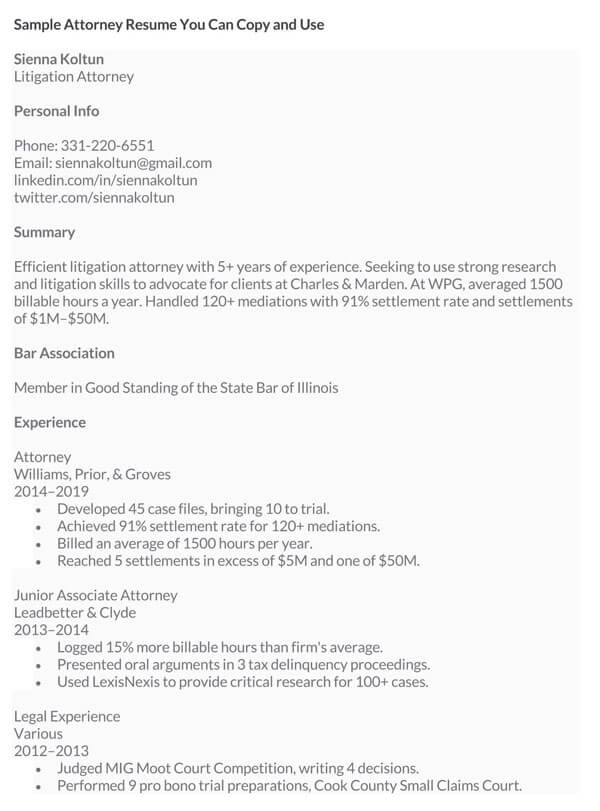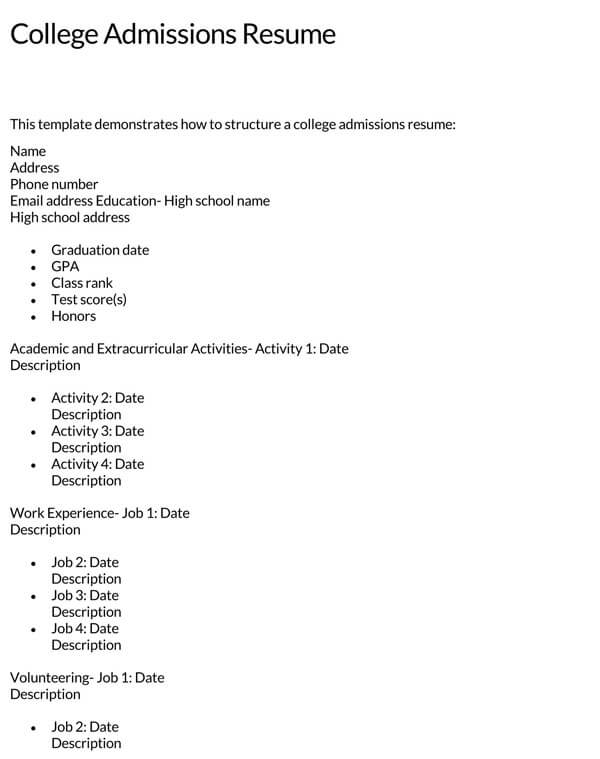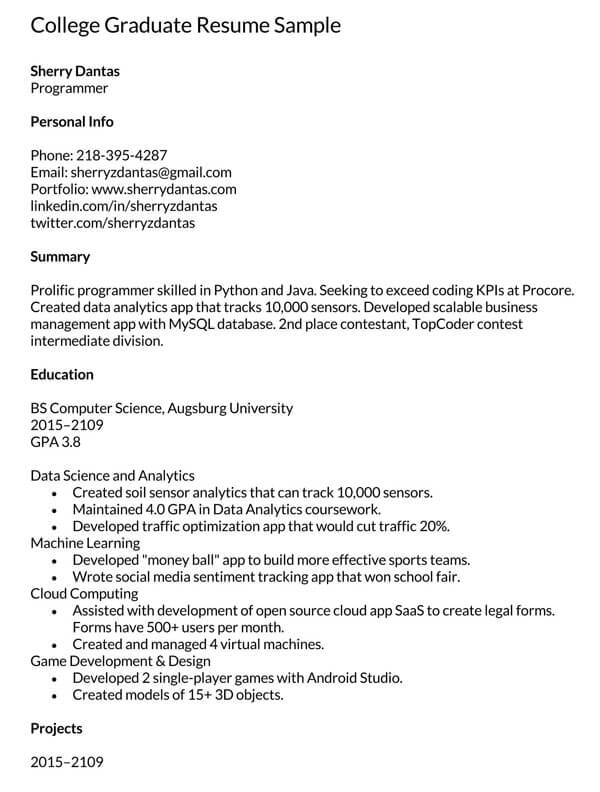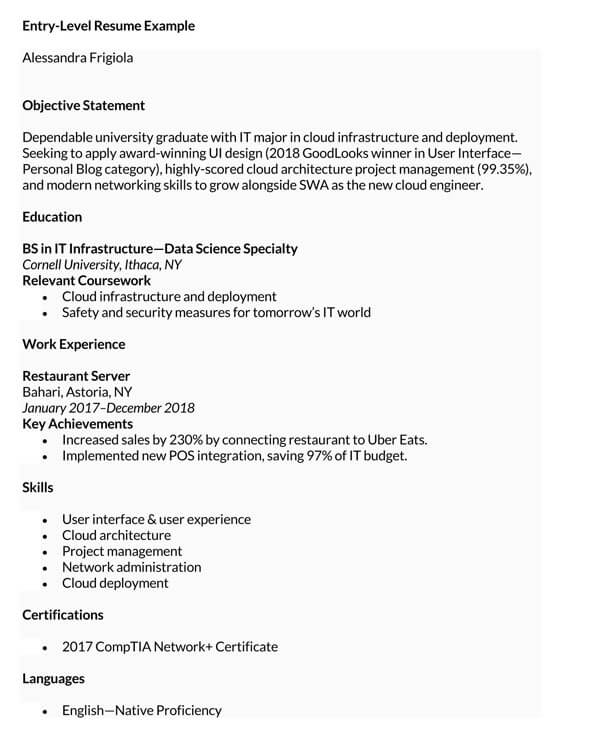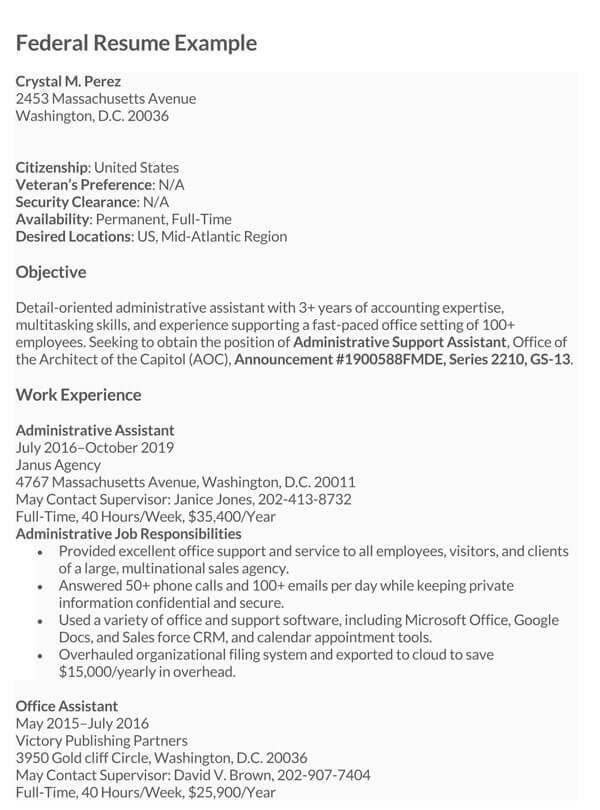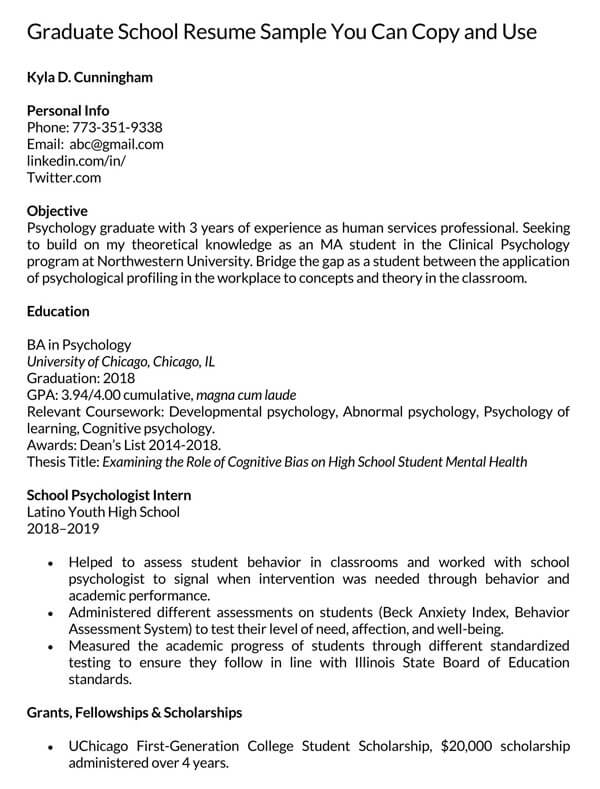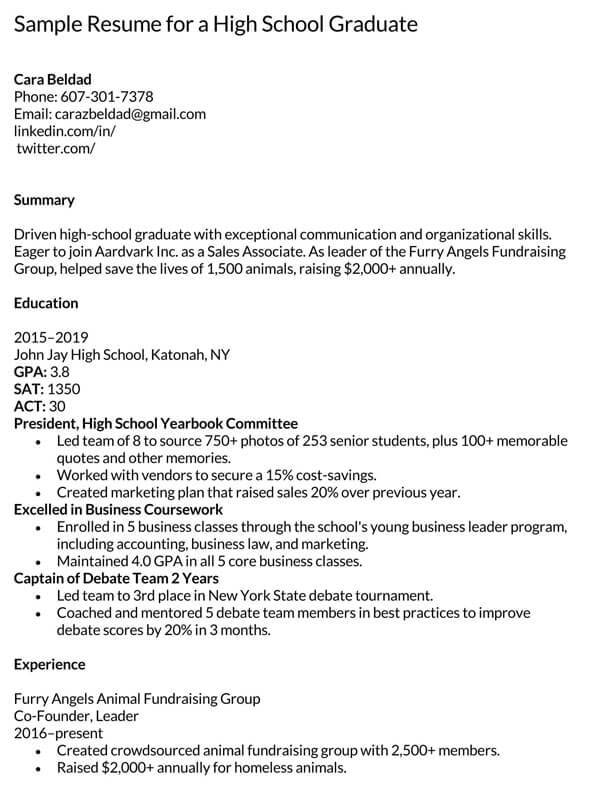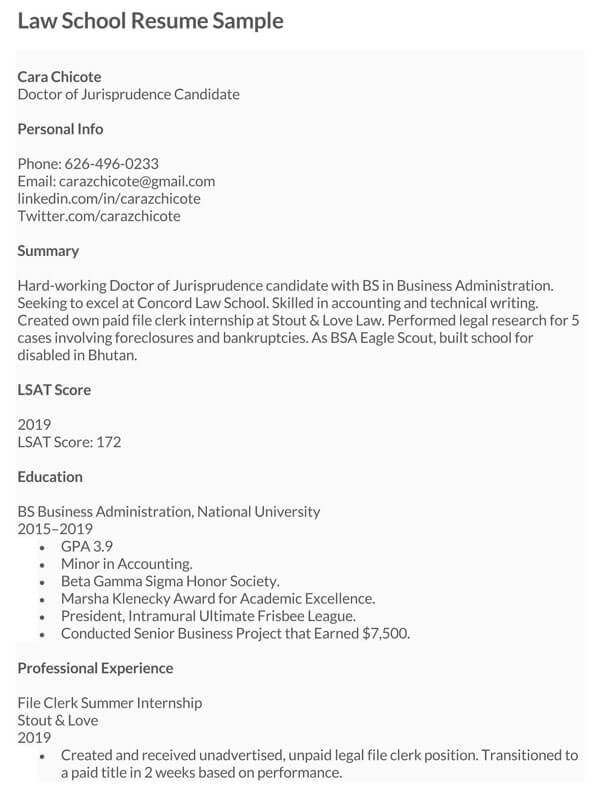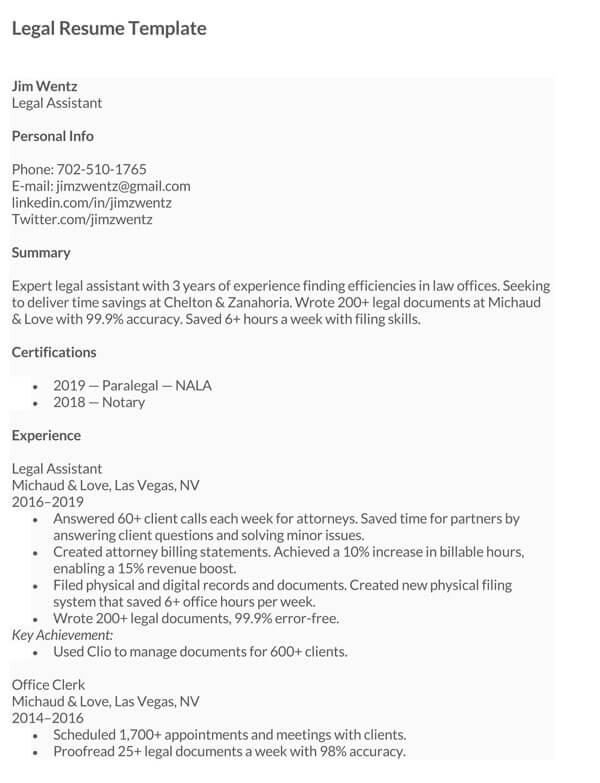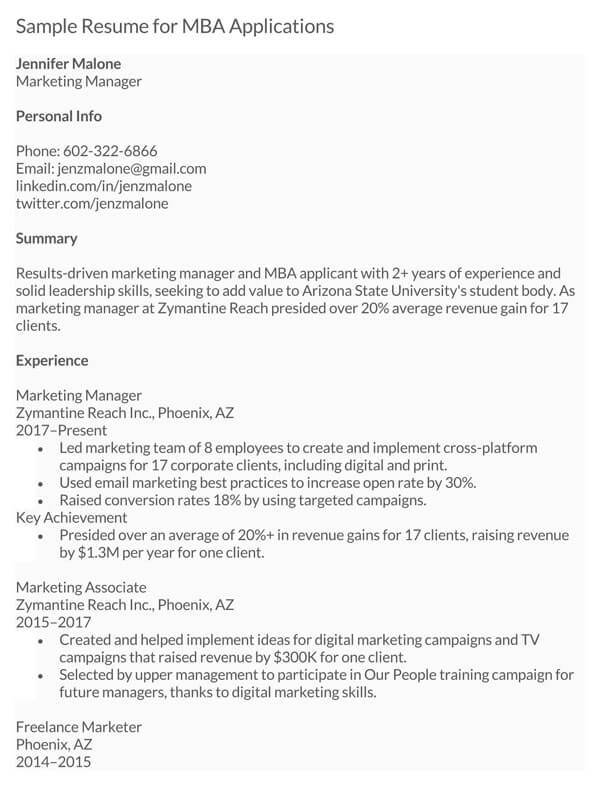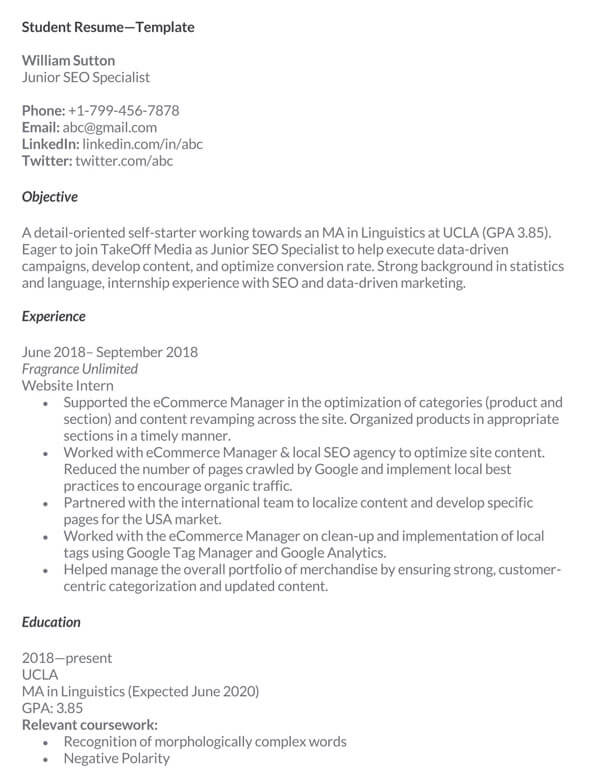In today’s world, resumes are no longer reserved for after graduation. Students nowadays must craft one as early as the ninth grade for everything from college applications to scholarship applications and internship applications. Knowing how to draft a great resume can be a door opener for you. This article will guide you on how you can draft a great college admissions resume that will help you stand out from thousands of applicants.
What is a College Admissions Resume?
A great college application resume is a summary of what one has been able to achieve during one time in high school. A college resume letter should not only highlight your greatest accomplishments but also show evidence of your character, such as initiative and determination.
Unlike an employment resume, a college admissions resume focuses more on academics than previous work experiences. If the applicant has held a job or jobs in the past, they should include them, but the resume’s biggest part should describe academic achievements and school-related activities.
Basic Contents of a College Admissions Resume
Typical college admissions resume should have the following elements and should follow the structure given below:
Academic grades and test scores: Your resume should include the grades that you attained and the test scores.
Academic activities: which activities did you partake in while in schools. Were you a member of any academic activities in your schools? Make sure to include such information.
Special skill sets: Do you have any special skill set? List down some of the relevant skills that you have.
Awards: Did you receive any awards while in high school? If yes, list them down in your resume
Previous jobs: Have you done any work before? How long, which position? Having some previous work experience will put you at a vantage position
Extracurricular activities: Were you on the football team? Which sports did you partake in?
Community services and volunteering: The applications review committee will be interested in seeing whether you like giving back to the community. If you have ever volunteered in any program before, make sure to include it in your resume.
Best Format of a College Admissions Resume
Heading
Your resume should have an appropriate heading. The heading should be short and straight to the point.
Academic qualifications
The second item that should be included in your resume is your academic qualifications. Which grades did you manage to get? How did you perform in your tests and finals? Such information should be included.
Extracurricular and school-related activities
After listing your academic qualifications, the next section of your resume should be about the extracurricular and other school-related activities you participated in. List down the activities and the position that you held
Jobs
Have you worked before? If you have some work experience, create a jobs section in your resume and list down some of the places that you have worked before. If not, skip this part.
Volunteering
Have you ever volunteered before? The next thing to add to your resume is the areas that you have volunteered in before. Have you worked for any non-profit organization? Have you helped in community-related programs before? List them down here.
Special skill sets and abilities
Do you have any abilities and special skill sets? List down your special skill sets and any special abilities that you have. Don’t make the list too long; put more focus on the ones that can make you stand out.
Accolades and awards
Did you receive any awards while in high school? Your resume should have a section of your accolades and awards.
Resume Formatting Tips
Formatting and organization: Organize your educational and job experiences in descending order, that is, starting with your most recent experience and work your way back in time as you move down the page.
Listing: Use bullet points to make your resume presentable, clean, and easy to scan. Start each bullet with an action verb and avoid repeating verbs in your bullet points.
Font size and style: Use a consistent style throughout your resume. For instance, if you use title case capitalization for section headings, commas, or abbreviations, stick with the same format for your entire college application resume. The same case applies to dates and the use of bold and italicized fonts and spacing.
How to Write Your Resume
When writing a college admissions resume, you can use the following step by step guide to assist you to write a great resume for your college admissions.
Create a template
Firstly, outline the areas in which you want to provide your information. Add vital elements like academics, skills, volunteering, previous job experiences, etc., and leave some space between each category to insert your achievements later. If you find it difficult to construct your template, we have provided an example in this article.
Research the college
Conduct thorough research of the institution at hand to know what is expected of you or be aware of the special information you need to include in your college admission resume. Although not a requirement, sometimes other colleges require you to include some special information in your resume.
Gather information
Countercheck your template alongside the list of categories from step one and identify the relevant information that you want to write about yourself in each category. Your list information should be in descending order. For instance, in your jobs category, list your current job first, followed by any other positions that you held before that, etc.
Add titles and dates
Write necessary titles and dates to your list items from step three. If, for example, you have worked at a Marketing firm after school for several years, list your position in the job and the number of years you’ve worked in that specific firm.
Fill in action-oriented bullets
Include a list of action-oriented bullets to explain your role in your past or current jobs, extracurricular activities, volunteer work, academic activities, etc. your bullets should be brief, concise, and clear.
Revise your resume
Go through your document and check all the information you have included. Ensure your resume is no longer than a page. If it is, do away with the irrelevant details and shorten your action-oriented bullets.
Find a proofreader
Get a knowledgeable adult such as your parent or teacher and request them to review your resume for format and content. Once they have reviewed and submitted errors, fix the mistakes.
College Admissions Resume Templates
Not sure how to get started in creating your college admissions resume? Use our free and premium Templates to craft an outstanding resume for college admissions. We have also provided a sample resume section herein to serve as an example of writing and formatting your achievements and accomplishments. Download our free templates today and use them to condense your achievements into an easy-to-read format.
Tips to Follow
Sometimes, writing an effective College Admissions Resume may be quite challenging as you may not know what to include and what not to include. The following tips will help you to effectively write your college admissions resume.
- Tailor your resume: Do away with the habit of using one resume for all your college admission applications. This is simply because each college you apply for may require you to include some special information or slightly different details than your previous one. Therefore, you should customize your resume to reflect the college for which you are applying for.
- Be concise: Always remember to keep your resume to a single page length since it’s only an overview. Most likely, you will be required to provide other application documents in which you can write long-form information about yourself.
- Be honest: Make sure that the information you have provided in your resume is accurate and true. By all means necessary, avoid embellishment.
- Always proofread: Remember to reread your resume before submitting it. Proofreading allows you to correct the spelling and grammar mistakes in your resume and make sure that you have captured all the required information.
- Avoid linking your resume to your social media presence: Do not add your social media pages to your resume unless it is a job-specific social media site such as LinkedIn or a social media page specifically created for college admission purposes.
- Formatting is key: Tailor your college admission resume in a way that is both appealing to the reader and easy to scan. Separate your information into segments with clear heading and titles, bulleted lists using a constant font. Organize your work chronologically, either by the rank of the activity or by the time commitment.
- Highlight things: Your resume is your chance to show colleges something new. Highlight your devotion to certain extracurricular activities or skills that did not make it on the application but is a major part of who you are in your resume.
Conclusion
Traditionally, we have all assumed that resumes are only meant for job seekers. However, times have evolved, and high school students are now required to include their resumes in college admission applications. This is actually a good idea as student resumes give colleges an overview of student accomplishments, extracurricular activities, work history if any, and student hobbies. College admission resumes also serve as an important tool for preparing for a college interview or to give to the teachers who are writing your letters of recommendation.
